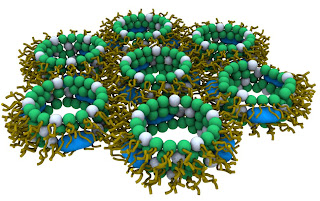"As dire as the growing problems are with a lack of enough clean water in the world, I have a great deal of hope that many of these problems can be solved by increasing research into the science and technology of water purification," said Shannon, who also serves as director of the National Science Foundation (NSF) Center of Advanced Materials for the Purification of Water with Systems (WaterCAMPWS).
One example is a June 27 international water forum at the Department of State at which NSF, UNESCO and a number of agencies and international organizations will be joining Shannon and other technical experts to confront some of the most pressing global water needs.
Shannon will lead the Congress for Water Purification Science and Technologies in the 21st Century in New Orleans on April 6-10, 2008, an event that coincides with an NSF public webcast on April 10 called Water in 2025, co-hosted by Popular Mechanics. Part of the larger Bridges to the Future forum (www.nsf.gov/bridges), the event is an opportunity for the public to call-in and ask questions of some of the top water researchers in the United States. -NSF-
Media Contacts Joshua A. Chamot, NSF (703) 292-7730 jchamot@nsf.gov
Rick Kubetz, University of Illinois at Urbana-Champaign (217) 244-7716 rkubetz@uiuc.edu
Program Contacts Rosemarie D. Wesson, NSF (703) 292-7070 rwesson@nsf.gov
Geoffrey A. Prentice, NSF (703) 292-8371 gprentic@nsf.gov
Principal Investigators Mark Shannon, University of Illinois at Urbana-Champaign (217) 244-1545 mshannon@uiuc.edu
Related Websites A University of Illinois press release about Mark Shannon and the Nature paper is at:: engr.uiuc.edu/faculty/news/
One of the Grand Challenges for Engineering--selected by a panel of leading thinkers including J. Craig Venter, Dean Kamen, Larry Page and others--is to provide the world with access to clean water. To learn more about the challenges, go to:: engineeringchallenges.org/
The National Science Foundation (NSF) is an independent federal agency that supports fundamental research and education across all fields of science and engineering, with an annual budget of $5.92 billion. NSF funds reach all 50 states through grants to over 1,700 universities and institutions. Each year, NSF receives about 42,000 competitive requests for funding, and makes over 10,000 new funding awards. The NSF also awards over $400 million in professional and service contracts yearly.
Tags: Nano or Nanotechnology and Nanotech or National Science Foundation and nanoscale filtration or international water forum
















No comments:
Post a Comment